A home theater, often known as a home cinema, is a specialized room within a house that is intended to imitate the enriching and immersive experience of a movie theater.
This involves a combination of high-quality visual and audio components designed to provide an optimal environment for movie watching. From the comfort of plush seating to the immersive sound of a high-end audio system, every aspect of a home theater is designed to elevate your viewing experience.
Whether you're a film buff seeking the perfect cinematic experience or a family looking to enjoy movie nights in comfort, a well-designed home theater is a worthwhile investment that brings the best of the movies into your home.
Here, you will find everything you should know about designing a home cinema with the help of Algedra designers.
The Evolution of Home Cinema
1- Early Beginnings
The history of home cinema is as fascinating as the movies played within them. It began in the 1950s when affluent enthusiasts used 16mm film projectors to show silent, black and white films in their homes. This era emerged as the beginning of personal cinema but was limited to those who could afford the costly equipment.
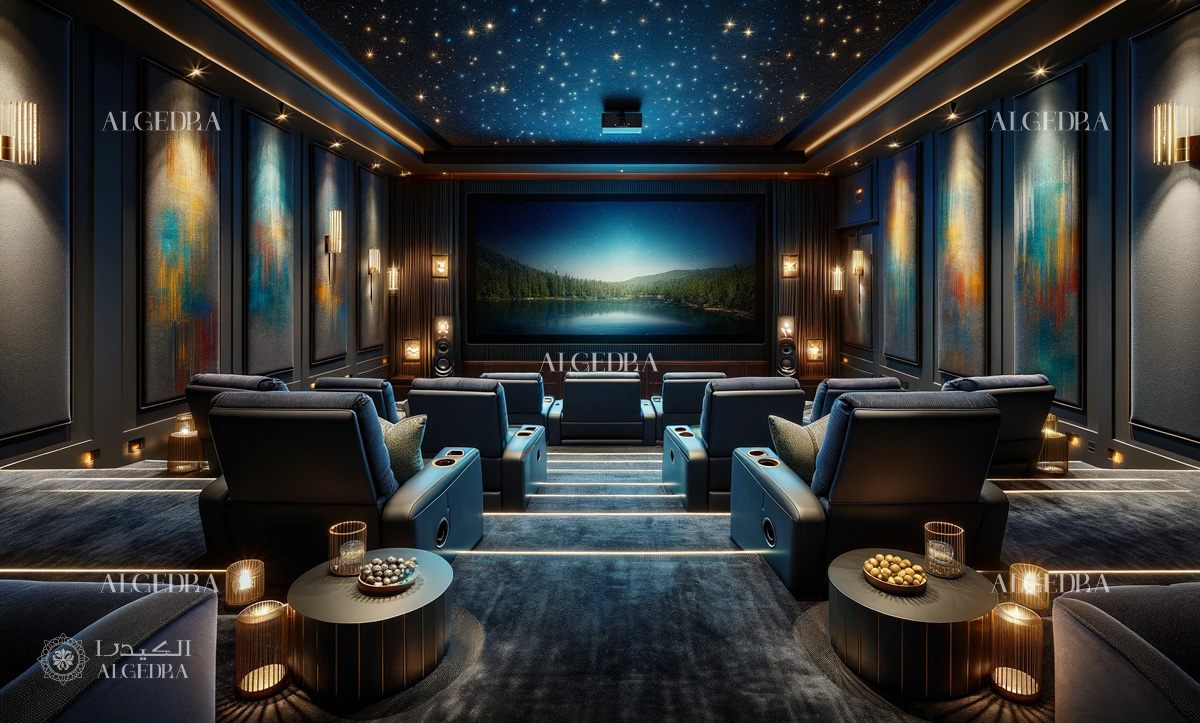
2- Technological Advancements
As the decades progressed, so did the technology and accessibility of home viewing. The 1970s appeared as a significant milestone with the introduction of VHS tapes and video players. This innovation brought cinema into the living room of the average family, expanding the movie-watching audience dramatically.

The 1990s saw another leap in home cinema technology with the advent of DVDs and Dolby Digital surround sound systems. These advancements offered sharper visuals and clearer sounds, enhancing the home viewing experience significantly.
3- The Modern Era
Today, the evolution continues with latest technology digital projectors, Blu-ray discs, and streaming platforms that provide different viewing options at one's fingertips.

Surround sound systems have also evolved, with technologies like Dolby Atmos and DTS:X adding height channels that offer an immersive 3D audio experience.
Characteristics of a Home Cinema
Here are the key characteristics of a well-designed home theater:
1- Visual Elements
The choice between a high-definition large-screen television and a projector depends on the room’s size and the viewer's preference. Projectors can create larger images and a more authentic cinema experience, especially in a darkened room. For smaller rooms or where ambient light is a concern, a large, high-definition television might be more suitable.
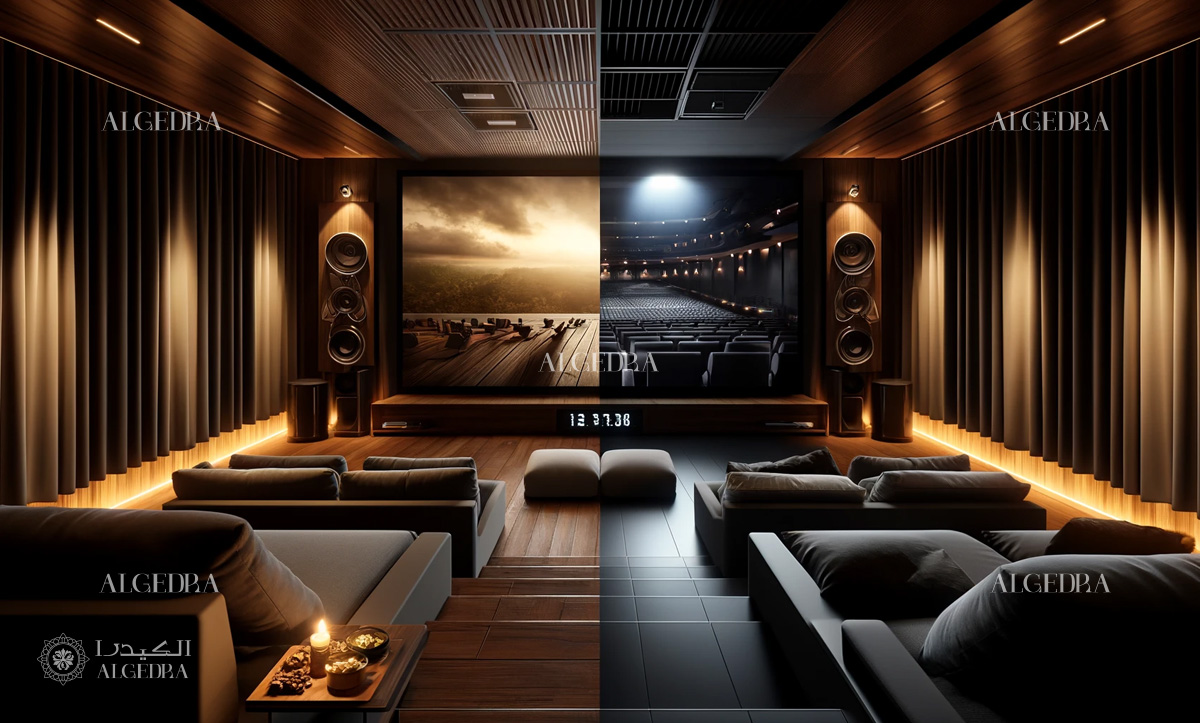
2- Audio Components
The audio setup in a home theater is critical. A multi-channel surround sound system, using at least 5.1 channels (five speakers plus a subwoofer), is the minimum for creating a cinema-like auditory experience.
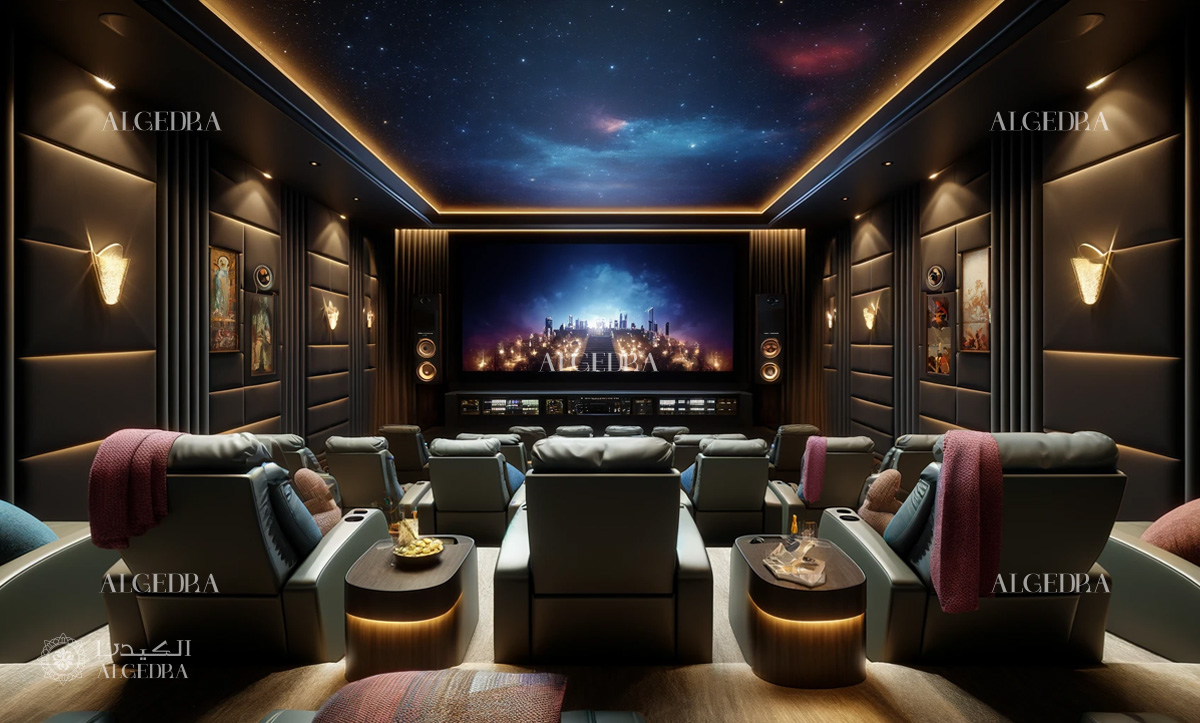
More elaborate setups might include up to 7.1 channels or even incorporate newer technologies like Dolby Atmos, which can support up to 34 speakers to create a fully immersive 3D sound environment.
3- Seating and Ambiance
High-quality recliners are popular, often featuring cup holders and storage compartments. The arrangement of seating is crucial to ensure each seat has an optimal view of the screen and sound. Ambient lighting, often controlled by dimmers, can help recreate the movie theater experience and contribute to the overall mood and functionality of the room.

Designing Your Home Theater
Creating the ideal home theater involves careful planning and consideration of various factors. Here are some essential tips:
1- Optimize Your Space
The physical environment of your home theater can greatly influence its quality. Acoustic treatments, such as wall panels and floor carpets, can help manage sound reflections and absorb unwanted echoes. Light control is also crucial; blackout curtains can prevent glare on the screen and preserve the quality of the image.
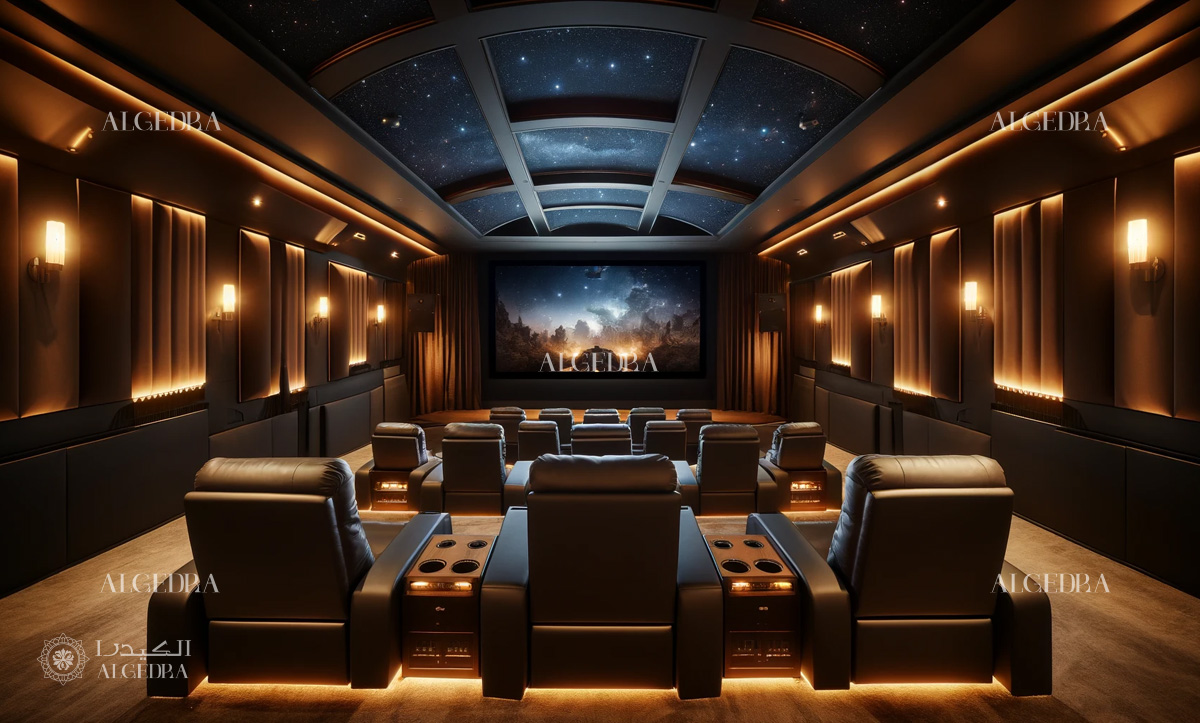
2- Choose the Right Equipment
Selecting the right equipment is crucial for your home theater. This includes choosing a screen or projector that fits the size of your room and a sound system capable of delivering clear and powerful audio.
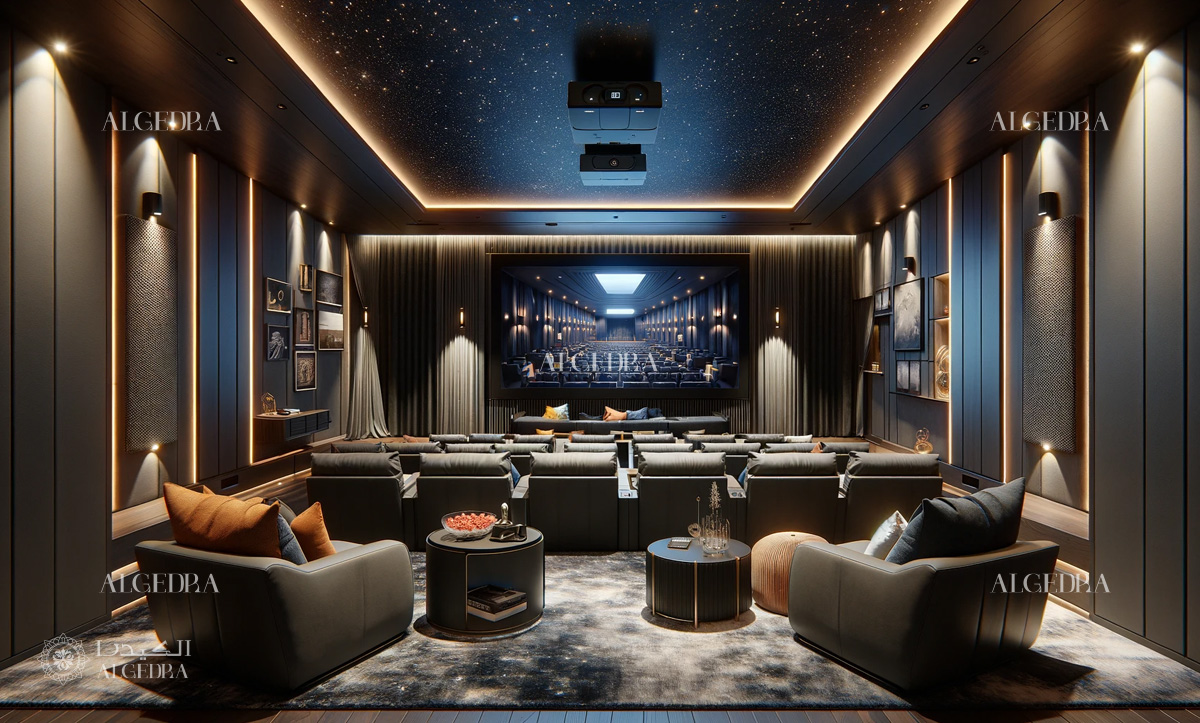
Consider consulting with an interior design company or a professional to ensure that your equipment is compatible and optimized for your space.
3- Universal Design
A great home theater should be enjoyable for everyone. Consider accessibility and comfort for all potential users, incorporating elements like variable seating arrangements and intuitive control systems for easy operation of AV equipment.
Home Theater Trends Across the World
The concept of a home theater is embraced globally, but cultural differences and space availability can influence its implementation:
1- In Large Homes
In countries like the United States and Australia, where larger homes are common, it's not unusual to find home theaters with elaborate setups, including multiple rows of seating and large screens that nearly fill a wall.

2- In Smaller Spaces
In contrast, in places like Japan and South Korea, space constraints make it necessary to integrate home theaters into multi-functional rooms. Here, retractable screens and ceiling-mounted projectors are popular to maximize the usability of the space.
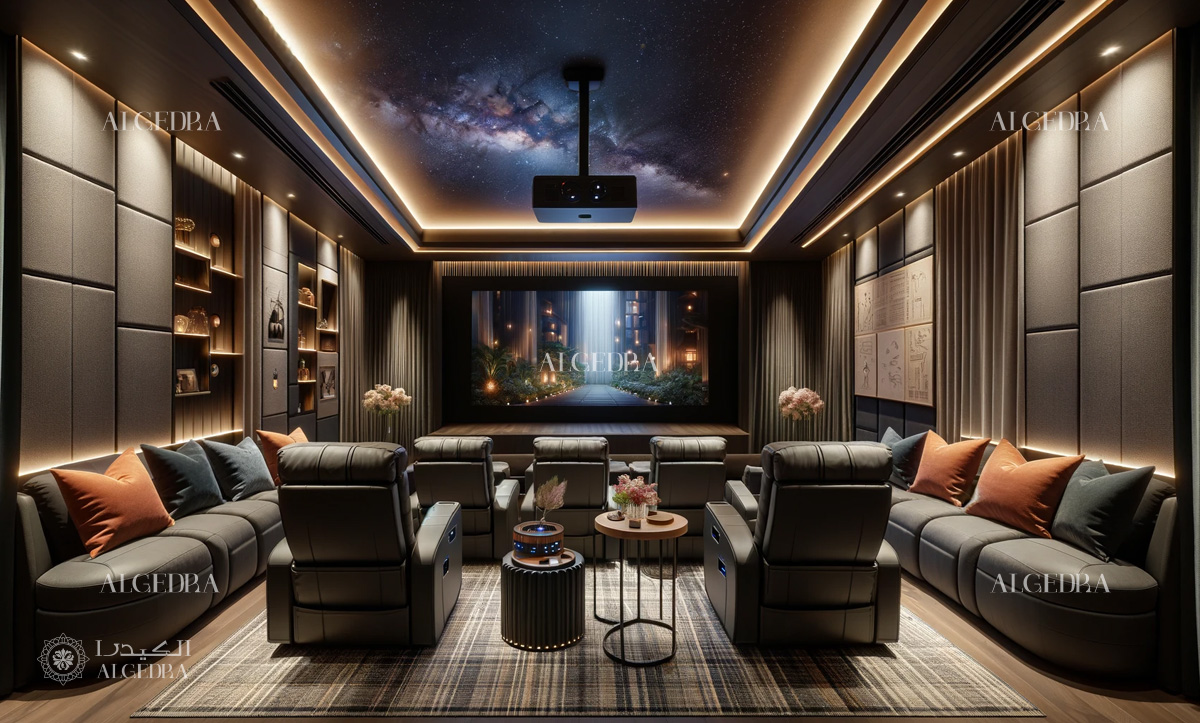
3- Adapting to Local Preferences
Each country has unique cultural preferences that can influence the design of a home theater. For instance, European viewers might prioritize sound quality and prefer advanced audio systems, while viewers in India might enjoy larger screens for Bollywood spectacles, which are typically vibrant and colorful.
